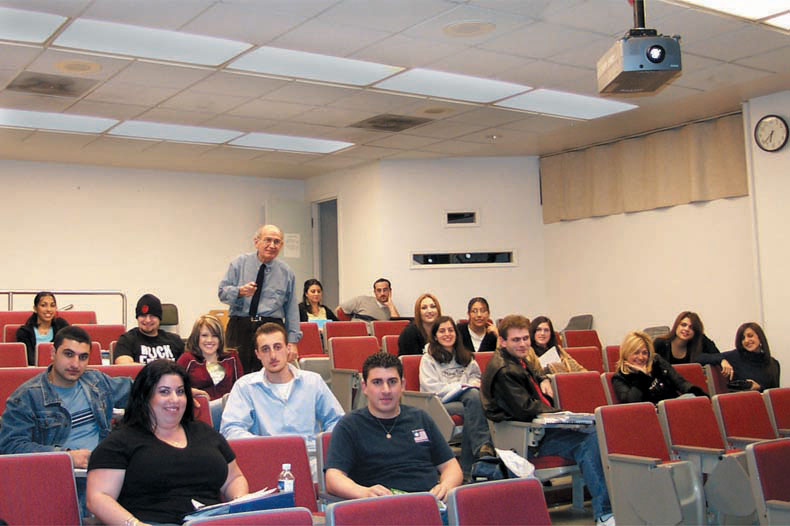Hakop Tataryan
Editor

Berberian Professor of Armenian Studies at Fresno State, Dr. Kouymjian began the semester with an architecture class in Armenian Studies. This year, 18 students took three weekends out of their spring schedule and invested it in the study of Armenian Architecture with Dr. Kouymjian. After some delays dealing with faulty slide projectors and the lack of outlets for students with laptops, the class began.
The main objective of the class was to teach about the Armenian churches that have been erected in the last seventeen hundred plus years. Sub-topics ranged from reviewing plans of the churches, to discussing the architectural innovations used to build them. However, with Dr. Kouymjian teaching the class, students were treated to occasional and very profound commentary on Armenian history, politics, the United States education system, and occasional hermeneutics.
Thanks to digital campus and the Blackboard platform, some classes can now be offered partially or completely online. However, this was the first class to have pictures as a key component, to be offered online. The students could spend more time discussing the topics in class and less time looking at slides, since the all slides were available for viewing online, with appropriate notes and lessons. This made it possible to review something that was unclear or ambiguous; we usually don’t get this opportunity in regular classes. On the other hand, we did miss out on a lot of Dr. Kouymjian’s live lecture and the anecdotes that he provides.
The topic of Armenian Architecture is somewhat esoteric, even in the larger study of art and architecture, thus many students may find it hard to relate to or study with care, but with Dr. Kouymjian teaching this class, most of the students were intrigued and very interested in learning about monuments such as: the Temple of Garni, Holy Etchmiadzin, Aghtamar and the mysterious and amazing Zvartnots. Of course others couldn’t get interested about this class, or any other class for that matter.
Anyone who has visited or plans on visiting these churches that are rapidly becoming vast tourist attractions ought to take the architecture class. After taking this class, there is a whole new level of appreciation and understanding for these monumental buildings. We study them because of the nostalgia that is embedded in every stone, found in every wall, or dug up from excavation.
However, the most endearing aspect of these buildings is the thought of how over two thousand years ago, Armenians were capable of such architectural innovations. Unfortunately, the majority of these churches are in ruins because of either intentional desecration or natural disasters. And since the churches located in historic Armenia are practically unreachable, they are all gradually disintegrating.
Since it is difficult to know the exact floor plans and structures of some of the churches, the goal shouldn’t be to rebuild them. Instead, we need to preserve them so that they can be studied and appreciated by future generations.
The class was a requirement for the Armenian Studies Minor, but even if it were not, I would have taken it anyway. Every student at one time or another should experience what it’s like to take a class with Dr. Kouymjian; I can’t articulate it in any other manner.
 Hye Sharzhoom Armenian Action
Hye Sharzhoom Armenian Action